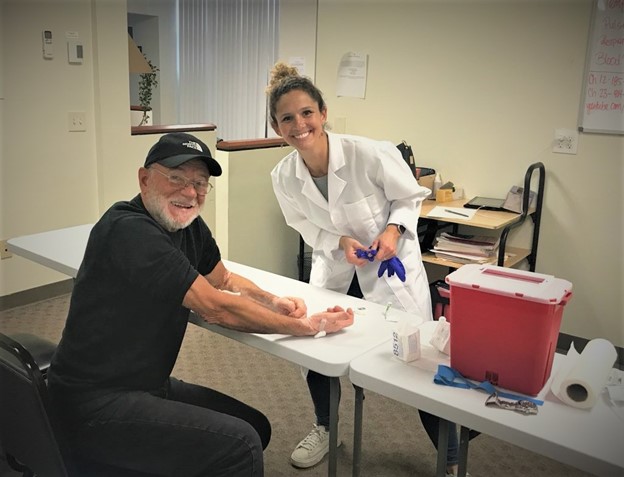Phlebotomy technicians are essential pieces of the medical system. Juliana Garofalo is a medical assistant and student with a focus on phlebotomy.
She explained that when she informs someone of her career goals, they’re often unfamiliar with what a phlebotomist does. Garofalo recently described the ins and outs of the position.
“Many people understand that phlebotomists draw blood, but they don’t understand all of the additional tasks we perform to lead our patients toward their health goals,” Garofalo said. “I’m eager to inform the public about the positive impacts of phlebotomists on patients and the entire healthcare industry.”
What Does a Phlebotomist Do?
The primary job of a phlebotomy technician is to draw blood from patients and prep the samples for future testing. However, the scope of the practice is broad.
A significant role of a phlebotomist is to discuss blood-drawing procedures with patients. They often comfort patients who are nervous about needles or having blood drawn. A phlebotomist is critical for putting patients at ease when visiting hospitals or medical clinics.
The following are additional jobs phlebotomists perform:
- Taking respiration, blood pressure, and pulse readings
- Explaining possible procedures
- Applying bandages after drawing blood
- Sterilizing workspaces and equipment
- Sending urine, fecal, or blood samples to testing facilities
- Discussing patient medical concerns and updating records
Where Does a Phlebotomy Technician Work?
Juliana Garofalo explained that phlebotomists work in a variety of settings. Typically, they perform their duties in doctors’ offices, clinics, and hospitals, but they may also work in blood donation centers, nursing homes, research institutes, and numerous other settings.
Phlebotomists work day or night shifts and on holidays and weekends. It’s a demanding position requiring them to spend most of their time on their feet, whether working with patients or preparing samples.
Becoming a Phlebotomist
“Phlebotomy is a rewarding profession,” Garofalo said. “The phlebotomist plays a critical role in helping patients feel at ease during what can be some of the most stressful of life’s moments.”
She explained that phlebotomists must undergo rigorous training to receive certification and fulfill the role. However, they do not have to attend medical school. It can be an ideal role for individuals who want to enter the medical field without years of schooling and expenses.
Phlebotomists must have a high school degree or GED and complete a phlebotomist training program. The programs require from several months to a year to complete.
Several organizations can certify a phlebotomy technician, including the American Medical Technologists, the National Healthcareer Association, and the American Society of Clinical Pathologists. Organizations have varying requirements, but most desire phlebotomy training, a diploma (or GED), and some work experience.
Juliana Garofalo explained that phlebotomy is an excellent career choice because it includes numerous opportunities for advancement within the healthcare industry.




